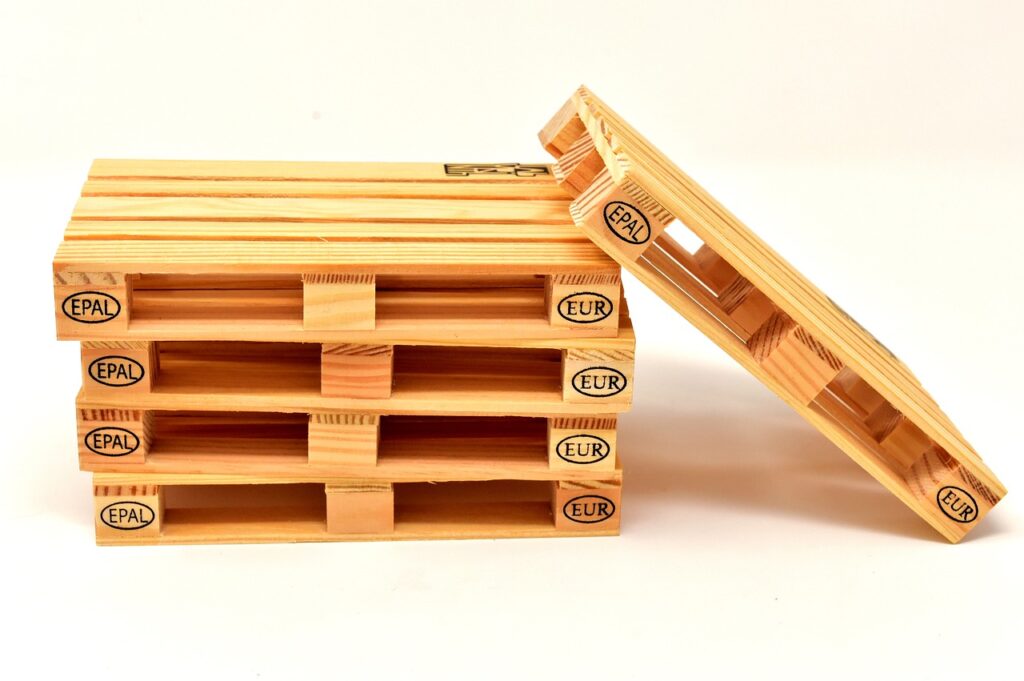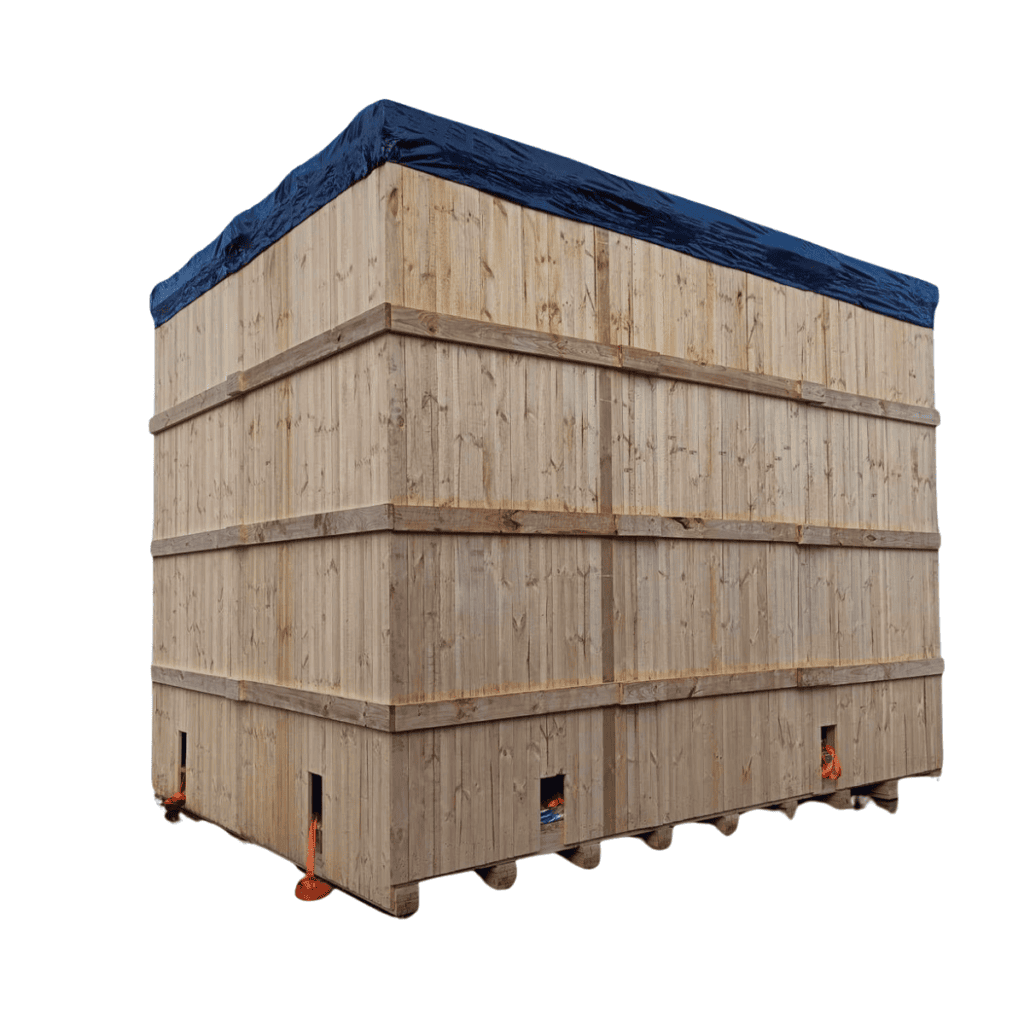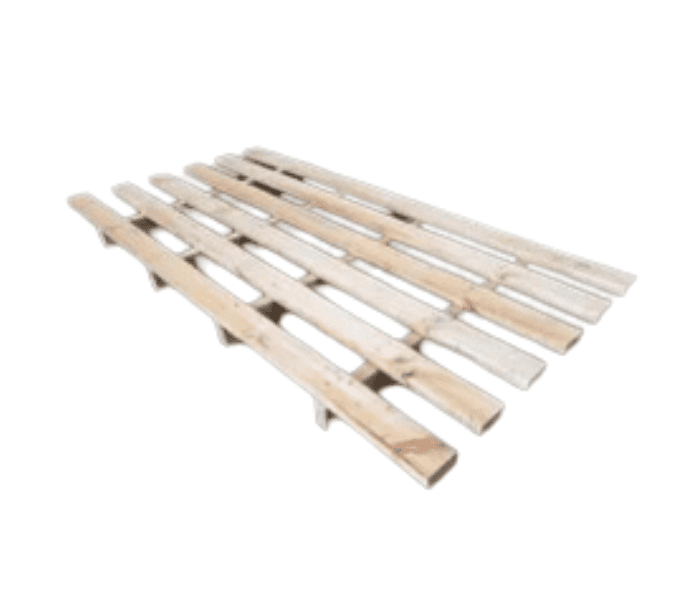How to Prevent Mould Growth on Pallets: Comprehensive Guide and Best Practices
Mould growth on pallets is a significant concern for industries that rely on timber and plywood pallets for storage and transportation. Mould not only compromises the structural integrity of pallets but can also damage products and pose serious health risks. This detailed guide provides practical strategies for preventing mould growth on wooden pallets, plywood boxes, and other timber packaging solutions, ensuring your packaging remains in optimal condition.
Understanding Mould Growth on Pallets
Mould is a type of fungus that thrives in moist and warm environments. Pallets, especially those made from timber or plywood, are particularly susceptible to mould due to their porous and absorbent nature. Recognizing the causes of mould growth is crucial in implementing effective prevention strategies.

Common Causes of Mould Growth
- High Humidity Levels: Elevated moisture levels in the air can cause wooden pallets and plywood boxes to absorb excess moisture, creating an environment conducive to mould growth. Humidity levels above 60% are particularly risky for timber packaging.
- Inadequate Ventilation: Limited airflow around pallets can trap heat and moisture, creating an ideal environment for mould spores to proliferate.
- Inadequate Drying: Pallets that are not thoroughly dried after exposure to moisture or before storage can retain dampness, leading to mould growth.
- Contaminated Storage Areas: Storage spaces with existing mould contamination can transfer spores to pallets, resulting in new mould growth.
Key Strategies to Prevent Mould Growth on Pallets
Use High-Quality, Treated Export Pallets
Investing in high-quality, treated export pallets can significantly reduce the risk of mould growth. Options include heat-treated and chemically treated pallets, which offer enhanced protection against mould and pests.
- Heat-Treated Pallets: Heat treatment involves heating wooden pallets to a temperature of 56°C (132.8°F) for at least 30 minutes. This process kills mould spores and pests, making the pallets less susceptible to mould. Ensure your pallets comply with ISPM 15 standards, which require heat treatment for international shipping.
- Chemically Treated Pallets: Chemical treatments involve applying anti-fungal and anti-mould agents to pallets. These treatments create a protective barrier that inhibits mould growth and enhances the durability of the pallets.
Ensure Proper Drying and Storage
Proper drying and storage practices are crucial for preventing mould growth. Pallets should be thoroughly dried before storage and kept in environments that minimize moisture exposure.
- Drying Pallets: After use, ensure pallets are completely dry before storing them. Avoid stacking damp or wet pallets, as this can trap moisture and foster mould growth. Consider using drying racks or elevated storage to aid in the drying process.
- Storage Conditions: Store pallets in dry, well-ventilated areas. Avoid placing them directly on the ground or in areas prone to high humidity or moisture accumulation. Using pallet racks or platforms can help keep pallets off the floor and improve airflow, reducing the risk of mould.
Maintain Good Ventilation
Adequate ventilation is crucial for preventing mould growth on pallets. Proper airflow helps to disperse moisture and prevent damp conditions that encourage mould development.
- Ventilated Storage Areas: Ensure storage areas have sufficient ventilation to allow air to circulate around pallets. Avoid storing pallets in enclosed or poorly ventilated spaces. Install ventilation systems or use fans to improve airflow.
- Regular Inspections: Conduct regular inspections of storage areas to identify and address any issues related to moisture or ventilation. Implementing air circulation systems or dehumidifiers can further enhance airflow and control humidity levels.
Implement Regular Cleaning Procedures
Regular cleaning of pallets and storage areas is key to preventing mould growth. Remove potential sources of contamination and ensure a clean environment for pallet storage.
- Cleaning Pallets: Regularly clean pallets to remove dirt, debris, and potential mould spores. Use appropriate cleaning methods such as pressure washing, scrubbing with mild detergents, or applying anti-fungal treatments. Consider using eco-friendly cleaning agents that are effective against mould.
- Cleaning Storage Areas: Keep storage areas free from mould and moisture. Regularly inspect and clean surfaces, including floors and walls, to prevent mould from spreading. Use dehumidifiers and air purifiers to maintain a clean and dry environment.
Control Environmental Conditions
Controlling the environmental conditions in which pallets are stored can help prevent mould growth. This includes managing temperature and humidity levels to create an environment that discourages mould development.
- Temperature Control: Maintain a consistent temperature in storage areas to prevent fluctuations that could promote mould growth. Ideal temperatures for preventing mould are generally below 20°C (68°F). Use climate control systems to regulate temperature effectively.
- Humidity Control: Use dehumidifiers or air conditioning to control humidity levels in storage areas. Aim for a relative humidity level below 60% to reduce the risk of mould growth. Regularly monitor humidity levels and adjust controls as needed.
Best Practices for Preventing Mould Growth on Pallets
Regular Monitoring and Maintenance
Regular monitoring and maintenance are essential for preventing mould growth. Implement a routine schedule for inspecting pallets and storage areas to identify and address any potential issues.
- Inspection Schedule: Develop a regular inspection schedule for pallets and storage areas. Check for signs of moisture, mould, or contamination. Address any issues promptly to prevent further mould growth. Document inspections and maintenance activities to track progress and identify recurring problems.
- Maintenance Procedures: Establish maintenance procedures to address any problems identified during inspections. This may include repairing or replacing damaged pallets, improving ventilation, or adjusting environmental controls. Regularly update maintenance protocols based on observed issues.
Employee Training and Awareness
Training employees on best practices for pallet handling and storage can help prevent mould growth. Educate staff about the importance of proper pallet care and the steps they can take to reduce the risk of mould.
- Training Programs: Develop comprehensive training programs for employees on proper pallet handling, storage, and cleaning procedures. Ensure that staff understand the importance of maintaining dry, well-ventilated storage areas and follow established protocols.
- Awareness Campaigns: Conduct awareness campaigns to reinforce the importance of mould prevention and encourage staff to report any issues promptly. Use visual aids and regular briefings to keep mould prevention practices top of mind.
Case Studies: Successful Mould Prevention Strategies
Case Study 1: Manufacturing Facility
A manufacturing facility faced recurring mould issues on its wooden pallets, leading to product damage and health concerns. The company implemented several strategies to address the problem, including:
- Switching to heat-treated pallets that comply with ISPM 15 regulations, reducing mould growth and pest infestations.
- Improving ventilation in storage areas by installing industrial fans and dehumidifiers to control humidity and enhance airflow.
- Implementing a regular cleaning schedule for pallets and storage areas, including the use of anti-fungal treatments and eco-friendly cleaning agents.
As a result, the facility saw a significant reduction in mould growth and an improvement in the quality of its products. The enhanced storage conditions also contributed to a safer working environment.
Case Study 2: Agricultural Operation
An agricultural operation encountered challenges with mould growth on pallets used for transporting produce. The company addressed the issue by:
- Using chemically treated pallets with anti-fungal agents to create a protective barrier against mould and pests.
- Installing dehumidifiers and air conditioning units in storage areas to control humidity and maintain a dry environment.
- Training staff on proper pallet handling, storage, and cleaning procedures to prevent mould contamination and ensure product quality.
These measures led to a marked decrease in mould-related issues, enhancing the freshness and quality of the produce. The company also observed improved efficiency and reduced product loss.
Conclusion
Preventing mould growth on pallets is crucial for maintaining the quality and safety of your products. By investing in high-quality, treated pallets, ensuring proper drying and storage, maintaining good ventilation, and controlling environmental conditions, you can effectively reduce the risk of mould growth. Regular monitoring, employee training, and best practices will further enhance your efforts to keep pallets mould-free. Implement these strategies to safeguard your timber and plywood pallets and ensure their longevity.

Contact Us for More Information
For expert advice and solutions on preventing mould growth and maintaining your pallets, reach out to Crate N Pack Solutions. Our team is ready to assist you with all your timber packaging needs and provide tailored solutions to keep your pallets in optimal condition.
Content Summary
- Introduction: Importance of preventing mould growth on pallets for product safety and health.
- Causes of Mould Growth:
- High humidity levels
- Inadequate ventilation
- Inadequate drying
- Contaminated storage areas
- Strategies to Prevent Mould Growth:
- Use High-Quality, Treated Pallets:
- Heat-treated pallets (ISPM 15 compliant)
- Chemically treated pallets with anti-fungal agents
- Ensure Proper Drying and Storage:
- Thorough drying of pallets
- Dry, well-ventilated storage areas
- Use of drying racks and elevated storage
- Maintain Good Ventilation:
- Proper airflow in storage areas
- Use of ventilation systems or fans
- Regular inspections of ventilation
- Implement Regular Cleaning Procedures:
- Regular cleaning of pallets and storage areas
- Use of eco-friendly cleaning agents
- Control Environmental Conditions:
- Temperature control (ideal below 20°C / 68°F)
- Humidity control (below 60% relative humidity)
- Use of dehumidifiers and climate control systems
- Best Practices:
- Regular Monitoring and Maintenance:
- Inspection schedules
- Maintenance procedures based on inspection findings
- Employee Training and Awareness:
- Training programs on pallet handling and storage
- Awareness campaigns to reinforce best practices
- Case Studies:
- Manufacturing Facility:
- Use of heat-treated pallets
- Improved ventilation and cleaning practices
- Agricultural Operation:
- Chemically treated pallets
- Dehumidification and air conditioning
- Staff training on handling and storage
- Conclusion: Emphasis on implementing strategies to prevent mould growth to maintain pallet quality and safety.
- Call to Action: Contact Crate N Pack Solutions for expert advice and tailored solutions to keep pallets mould-free.
Frequently Asked Questions
Pallets are flat structures used to support goods in a stable manner during transport, storage, and handling. They are crucial in logistics because they allow for the efficient movement of large quantities of goods, reduce handling time, and minimize damage during transit.
There are several types of pallets, including:
- Wooden Pallets: Traditional, versatile, and cost-effective.
- Custom Pallets: Tailored to specific dimensions and load requirements.
- Timber Pallets: Eco-friendly and sustainable, made from renewable resources.
- Export Pallets: Compliant with international shipping regulations like ISPM-15.
Pallets can be made from various materials, including:
- Wood: The most common and economical option.
- Plastic: Durable, lightweight, and resistant to moisture and chemicals.
- Metal: Strong and suitable for heavy loads or industrial uses.
- Composite: A mix of materials that offer specific benefits, like enhanced durability or reduced weight.
Timber pallets offer several advantages, including durability, cost-effectiveness, ease of repair, and environmental benefits through recycling and reuse. They’re also widely accepted in most industries, making them a versatile choice.
When selecting a pallet, consider factors such as the weight and dimensions of your goods, the type of transport (domestic or international), and any specific industry regulations. Custom pallets can be designed to meet unique requirements.
Export pallets are specially designed to meet international shipping regulations, particularly the ISPM-15 standard, which requires pallets to be heat-treated or fumigated to prevent the spread of pests. These pallets are essential for ensuring compliance with global trade laws.
Recycling pallets reduces waste, conserves resources, and lowers the environmental impact of manufacturing new pallets. It also promotes a circular economy, where materials are reused rather than discarded.
The most common pallet size in Australia is the Australian Standard Pallet, which measures 1165mm x 1165mm. Other standard sizes include the Euro Pallet (1200mm x 800mm) and the North American Pallet (1200mm x 1000mm).
Key factors to consider include the supplier’s ability to offer high-quality pallets, customization options, compliance with industry standards, sustainability practices, and the ability to meet your delivery timelines.
At Crate N Pack Solutions, we pride ourselves on offering fast lead times, ensuring that you receive your pallets promptly without compromising on quality. This is especially important for businesses that need to maintain a steady supply chain.
Crate N Pack Solutions offers high-quality, customizable pallets designed to meet a wide range of needs. Our commitment to sustainability, fast delivery, and exceptional customer service makes us a trusted partner in the industry.
Yes, pallets can be fully customized to match your specific requirements, including size, load capacity, and material. Custom pallets ensure the safe and efficient transport of your goods.
Wooden pallets are biodegradable, recyclable, and made from renewable resources. They contribute to reducing carbon footprints by being reusable and repairable, making them an environmentally friendly choice.
Pallets are designed to meet specific load capacities and durability requirements. The construction involves selecting the appropriate material, assembling the pallet to distribute weight evenly, and ensuring it can withstand the stresses of transport and handling.






